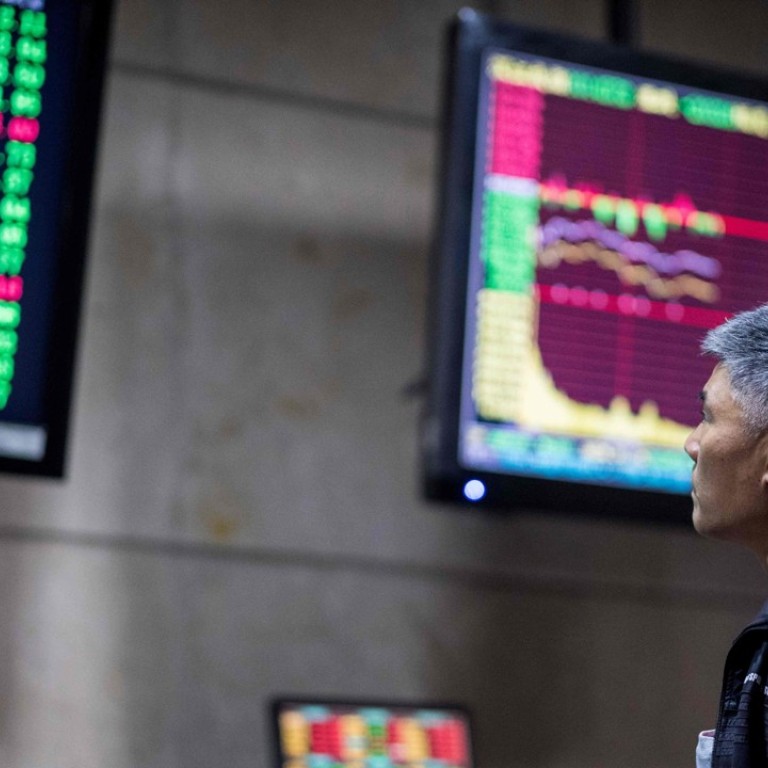
Chinese stocks are regaining their appeal as the US economy comes back down to Earth
Nicholas Spiro says there are compelling reasons to get back into Chinese equities. American stocks are seen as increasingly overvalued, while the trade war’s impact on Chinese stocks is less serious than expected
Yet while the S&P 500 rose a further 0.8 per cent last week, the CSI 300 Index, a gauge of large mainland-listed stocks, was up more than 5 per cent, with the index surging 3 per cent last Friday, its biggest daily gain since March 2016, according to data from Reuters.
A previous rally in July fizzled out as investors fretted about the trade dispute and harboured doubts about whether Beijing’s recent shift towards more growth-supportive policies could prop up the economy as the government perseveres with its deleveraging campaign.
Watch: Escalating US-China trade war makes European firms nervous
While these concerns have not gone away, the appeal of Chinese equities is growing due to a confluence of external and country-specific factors.
First, there are increasing signs that this year’s sell-off in emerging market assets is abating. Since September 11, the MSCI Emerging Markets Index, the leading gauge of stocks in developing economies, has risen 4.8 per cent while the MSCI Emerging Markets Currency Index, a separate gauge tracking the performance of 25 currencies, has been fairly stable since mid-August.
According to data from Bloomberg, the largest Exchange Traded Fund tracking emerging market local currency debt drew nearly US$170 million last Tuesday, the biggest daily inflow since June 2017. Even the Turkish lira, one of the most vulnerable currencies, has risen this month, mostly because of the renewed weakness of the US dollar, a crucial determinant of sentiment towards developing economies.

Not only does it appear that the rally in the dollar has more or less run its course, American equities are perceived as increasingly overvalued versus stocks from the rest of the world. According to a report from Bank of America Merrill Lynch published last Thursday, the S&P 500 is trading at a premium versus all of the major regions – Japan, Europe and emerging markets – simultaneously for the first time since 2009.
One of the big themes in markets right now is the anticipated convergence in global asset prices and economic fundamentals as the period of American exceptionalism starts to give way to more balanced growth and returns.
The recoupling of the US with the rest of the world has been apparent since the start of this month, with the S&P 500 up less than 1 per cent and the MSCI ACWI ex US (a gauge of global stocks excluding American shares) up just over 1 per cent. According to Citigroup, economic data in the US is no longer exceeding analysts’ estimates while growth in other parts of the world is proving stronger than expected.
Third, China’s battered equities, with the MSCI China Index down more than 7 per cent since the end of June (compared with a nearly 1 per cent rise for the rest of emerging market stocks), are pricing in an awful lot of bad news. It has pushed the index’s forward price-to-earnings ratio, a popular valuation tool, down to 10.7, on a par with the broader index and at a much wider discount to US stocks than the historical average.
What is more, the impact of the trade tariffs on Chinese stocks is less severe than the deterioration in sentiment would suggest, with companies in MSCI China deriving less than 3 per cent of their revenues from the US, according to MSCI. Mainland-listed firms are even more insulated from the tariffs, with domestically focused banks and industrial companies dominating the CSI 300.
There is also the risk that US equities will converge with those in the rest of the world not because of a recovery in emerging markets but because excessive monetary tightening by the Federal Reserve might strain US assets.
Fund managers remain exceptionally bullish on America’s stock market and extremely bearish on developing economies, according to a new Bank of America Merrill Lynch survey. Yet this may be precisely the reason for investors to start rotating back into Chinese stocks.
Nicholas Spiro is a partner at Lauressa Advisory


